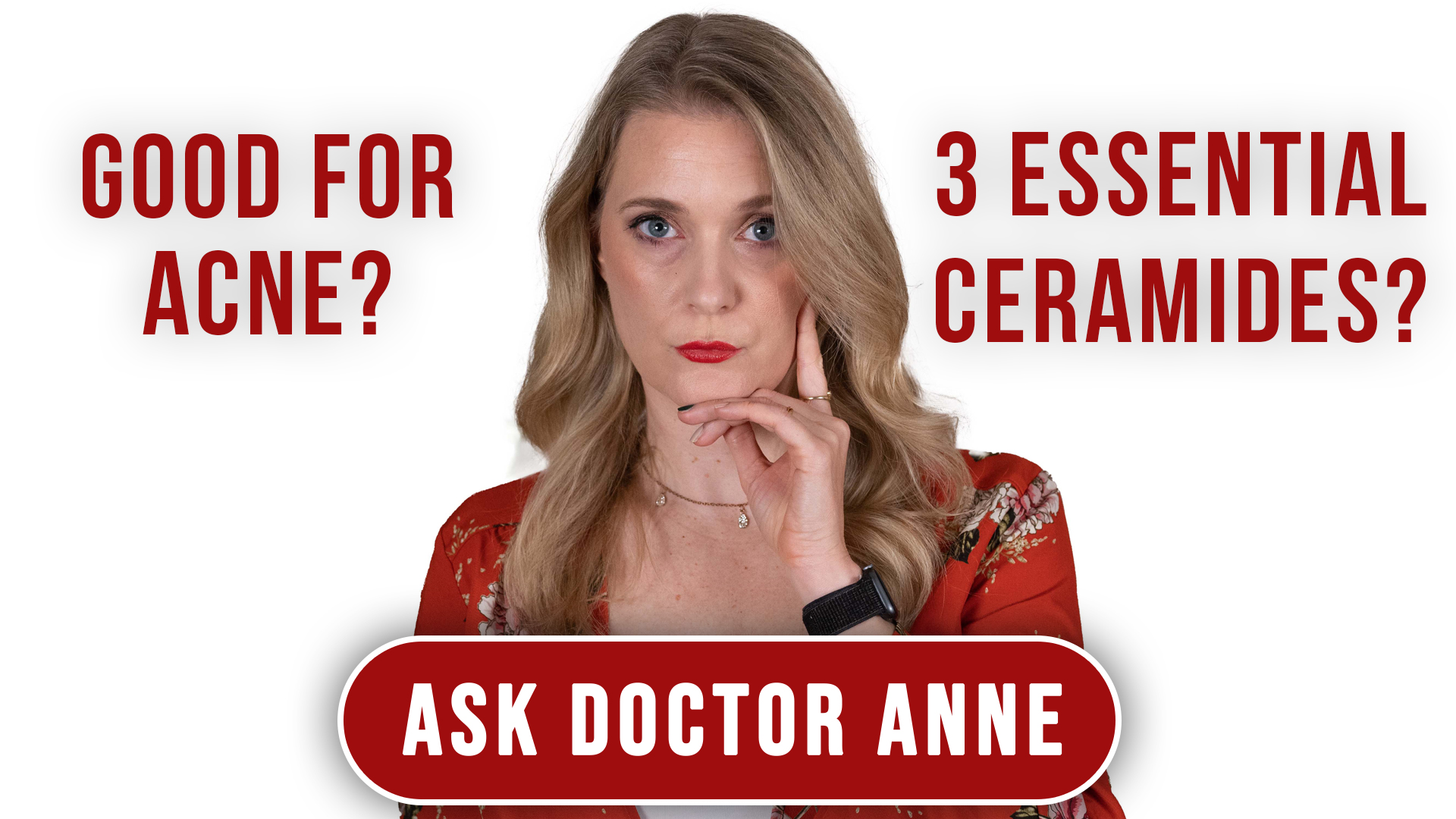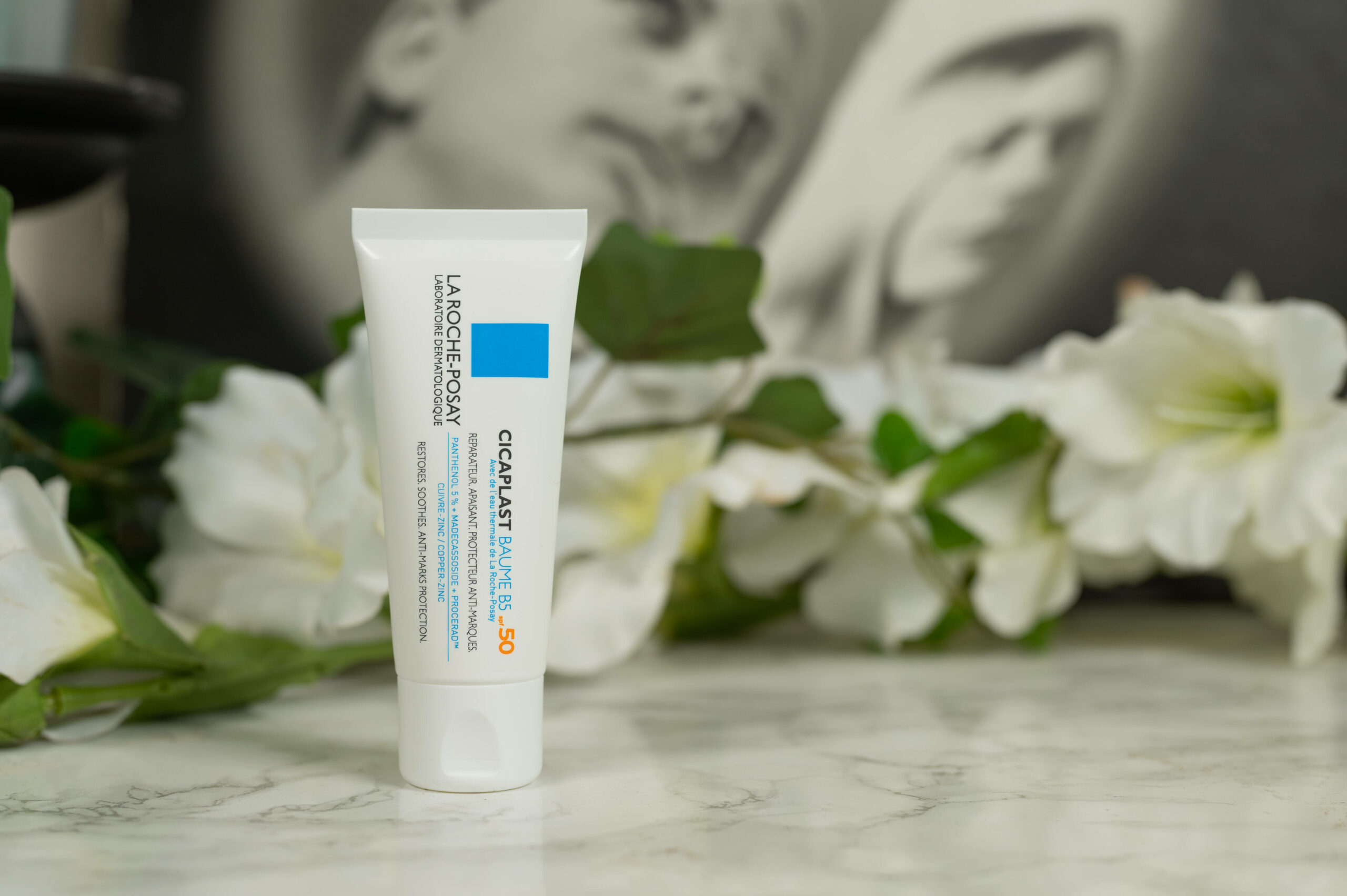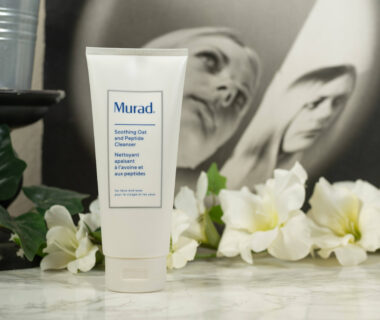ADVERTISEMENT INFO: LINKS USED ARE AFFILIATE LINKS. I RECEIVED NO MONEY TO WRITE THE BLOGPOST. PLEASE READ DISCLAIMER
It is the time of the year again when the heating is on, the winds are cold and our skin gets drier and drier. And the solution you are offered basically everywhere? Ceramides!

Not only in a heavy cream, no, you can now get your Ceramides in various different textures – more on that later. But what are Ceramides, what do they do and do you really need them? Let’s look at some facts.
What are ceramides?
Ceramides are a waxy fatty substance that is part of the skin’s outermost layer and are created from sphingosine that binds to other fatty acids. Depending on the different carbon chains in the sphingosine, the ceramides differ in structure.
Alongside free fatty acids and cholesterol, these different ceramides make up the lipid layer between the dead skin cells called the skin barrier.
When the cells start moving up from the basal layer of the skin, they start forming a fat globule inside that contains roughly 50% ceramides, 25% Cholesterol, 20% free fatty acids and 5% other lipids. Once they reach the outer layer, they release that globule that then fills the space between them, sealing in the moisture and preventing unwanted stuff from penetrating the skin.
(More info: Damaged skin barrier – reason for acne and eczema?)
How many different forms of ceramides are there?
When you talk about ceramides, you have to distinguish between natural ceramides present in our skin, in soy or in cows, and so called pseudoceramides or synthetic ceramides. Don’t be fooled by the “pseudo” in the name, they have exactly the same structure and function as the natural ones, but mean you don’t need to have parts of cow in your face cream.
Depending on the type of sphingosine and the type of fatty acid bound together, there are 12 different categories of ceramides that all are present in each individual’s skin in different concentrations and that differ depending on the location on the body. That is important to know, as it already tells you that there is no “normal” or “ideal” ratio of ceramides that is the same for everyone.
We do know that in certain skin conditions like atopic dermatitis, Ceramides 1, 3 and 6-II are deficient or rather malfunctioning, which is probably why these three are the ones most studied and most commonly found in skincare products.
Why is skin lacking in ceramides?
The reasons why skin is lacking ceramides are manifold, but an important one is, once again, aging. It is estimated that once you reach your 40s, you have up to 60% less ceramides than you had as a child. (More info: The main risks of aging)
Other factors are malnutrition, environmental factors like smoking or harsh weather or overuse of stripping skincare like certain cleansers or actives. (More info: Do you really need to Double Cleanse?)
There are also genetic factors: I mentioned already that certain ceramides are deficient in people with atopic dermatitis, and the reason for that seems to be a defective protein called filaggrin that leads to the ceramides produced not functioning like they should, and there are probably others that we have yet to discover.
What can ceramides do for your skin?
A lack of ceramides leads to an impaired barrier function with heightened Transepidermal Water Loss, so a tendency for dry and dehydrated skin as well as a rough and flakey appearance and in extreme cases eczema.
If you substitute the ceramides topically, you can improve the appearance of the flakey bits, but you can also encourage your skin to increase Ceramide production in itself, leading to a better barrier function and reduced transepidermal water loss. That has been shown in people suffering from eczema, where a ceramide containing moisturizer brought improvement compared to a non-Ceramide moisturizer, but obviously findings in people with a skin condition can’t be transferred one on one to people without that condition.
What are the side effects of ceramides?
Ceramides are generally considered safe for everyone, even those with very reactive skin, but it is obviously possible to react to anything, so patch testing before first use is never a bad idea.
Depending on the concentration and formulation, ceramide creams can have a tendency to feel heavier on the skin – remember, they are a waxy lipid – so not all products might be the most comfortable on oily skin.
When it comes to pairing ceramides with other ingredients, they go with absolutely everything and can be used alongside retinoids, VItamin C or exfoliants without any issues. (More info: How to layer your skincare the right way)
Does the ratio of ceramides in your moisturizer matter and what are the 3 essential ceramides?
You might have heard about the so-called “3 essential ceramides” that have the most data behind them and that are also available as prescription, so should you look out for these?
“Essential” in medical terms, for example essential amino acids, are substances that our body can’t produce on its own and that need to be taken in through your nutrition. All ceramides can be produced by our bodies, so by that definition no ceramide is an essential one. The name refers to the ceramides we know are deficient in the skin of people with atopic dermatitis, and they do have indeed the most data on them – no surprise, we have a lot of interest in the skin changes for different skin conditions to be able to best help the people suffering from them. That doesn’t mean however that someone with perfectly normal skin will have any benefit from applying these three over any of the other ceramides.
We don’t know for sure if some of the ceramides are superior to others for those without a skin condition, and we also don’t know if the ratio in which they are present in our cream really plays a role. To be able to answer that, we would probably need to do an individual ceramide analysis, match that to the “normal” we don’t yet know for sure and then mix the cream.
So when some product claims to have the ideal ratio of ceramides – or the ideal ratio between ceramides, cholesterol and free fatty acids, know that this is mostly marketing.
That doesn’t mean the three “essential” ceramides – Ceramide NP, Ceramide EOS and Ceramide AP – are bad, they are great to have in your product. Just don’t disregard a product that has others.
Can you use Ceramides when you have acne?
Using a waxy lipid sound counterintuitive if you suffer from acne, but there seems to be a link between low levels of ceramides in the skin and hyperkeratinization because the skin cells don’t shed as easily, but clump up and block the pore, leading to a microcomedone and an inflammatory lesion, meaning the right formulation – right as in the right texture, not the right ceramides, might help.
If you are on acne medications like Benzoylperoxide, strong retinoids or even Accutane, adding ceramide containing skincare might help mitigate the side effects of that medication, which often is dry, flakey skin and increased Transepidermal Water Loss. (More info: How to use Retin-A with minimal irritation)
Is skincare with ceramides really effective?
Outside the outlined skin conditions, Ceramides are probably not a must-have, but a good option for those that feel their skin barrier is impaired and could use some support. There isn’t much evidence that they do benefit, but they certainly do no harm and are widely available and affordable, so I think it is worth trying them to see how your skin reacts to them. I personally wouldn’t go out of my way to incorporate them in my routine though.
There are other ingredients you are probably already using that do encourage the skin to produce more ceramides like Urea, Lactic Acid or Niacinamide, so whatever you decide to do, you are probably on a good way.
(More info: The 5 steps to take if your skin barrier is damaged)
How can I get ceramides naturally with my diet? What about Ceramide supplements?
I just want to briefly touch on nutrition here, as that is not my area of expertise, but a question I get a lot. Obviously getting ceramides with your diet is important and probably more helpful than topical application.
That doesn’t mean I encourage taking ceramide supplements. I don’t encourage any supplementation without professional guidance anyway, but especially in that case a relevant nutrition based ceramide deficiency isn’t something I have heard of. Foods like brown rice, corn, sweet potatoes, wheat germ, soybeans, dairy and eggs seem to be good sources.
(More info: The best supplements for skin health)

Products with Ceramides
I’ll get the best known ones out of the way first: Cerave and the Dr. Jart + Ceramidine line. Both have ceramides in the brand name and are really popular with a wide selection of different textures for different skin types. I haven’t tried either brand myself, but both contain the before mentioned 3 “essential” ceramides and then some more.
Two other brands that contain ceramides are Eucerin with their Advanced Repair Lotion and La Roche Posay with their Toleriane line and the Cicaplast Baume B5. Most of them are on the richer side, but the La Roche Posay Toleriane and the Dr. Jart + Ceramidin line contain products that are better in texture for oily skin as well.

Shop some ceramide containing products here
Don’t forget to check out the Discount Code Page on top if you want to save some money on your next skincare purchase.
If you want to get a vote in the next Ask Doctor Anne Topic, Ingredient Spotlight or product I review, don’t forget you can head over to my Patreon account to get more involved!


